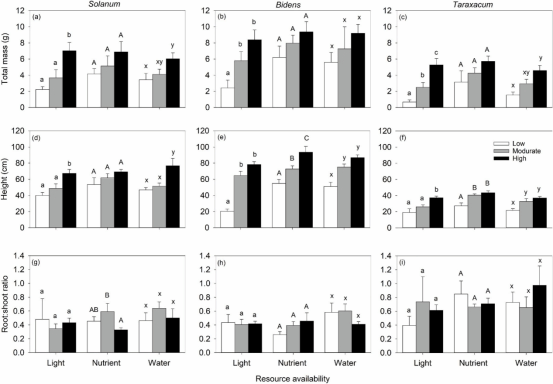Plants that hyperaccumulate heavy metals such as cadmium (Cd) are important agents of phytoremediation. Availability of resources such as light, nutrients, and water can affect heavy metal accumulation by plants, but the responses of hyperaccumulators to different levels of resource availability remain little studied. To test such responses, three Cd hyperaccumulators, Solanum nigrum, Bidens pilosa, and Taraxacum mongolicum, were grown in Cd-contaminated soil; subjected to three levels of light, nutrient, or water availability; and measured for growth, Cd accumulation, and photosynthetic efficiency. All three species accumulated more total biomass and grew taller if given high than low water or light (each P < 0.001). Species accumulated four to eight times more Cd (190− 309 versus 24− 68 μg Cd g− 1 mass) under high than low light. High water availability increased Cd accumulation by 89% in B. pilosa but decreased it by 31% and 40% in S. nigrum and B. pilosa, respectively. Effects of nutrients on both growth and accumulation varied between species; Cd accumulation by S. nigrum and T. mongolicum was respectively 14% and 54% lower at high than low nutrients, while it was 130% higher in B. pilosa. Light but not water or nutrient availability affected effective and maximum quantum yields and
electron transport rate. Findings from this study suggest that low levels of light may constrain phytoremediation of Cd in soil and that testing species of Cd hyperaccumulators individually for responses to levels of water and nutrients will inform selection of species for phytoremediation.
